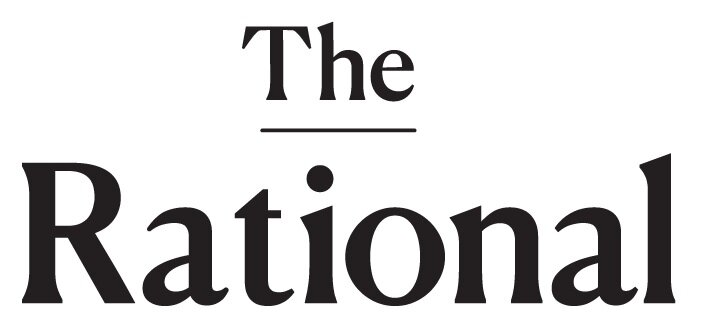Clarifying Tragedy through the Lens of Art
Sitting down with Connie Mae Oliver’s cosmos a personal voyage by carl sagan ann druyan steven soter and me.
What does it mean to “come to terms” with nonsense? With that which has no sense? With that which is incomprehensible? Connie Mae Oliver, a New York-based poet and founding editor of FEELINGS, an online journal of poetry art and audio, grapples with these questions as she deftly finds her own true language in her book of anti-war poems, cosmos a personal voyage by carl sagan ann druyan steven soter and me, published by The Operating System in 2017.
She wrote this collection of poems while watching the 1980’s Cosmos series, and her reactions to war-related news are interspersed with narrative details of the show, which, as Connie says, “is meant to evoke questions regarding how we personally conceptualize impressions of the world at large and our local reality.” Spanish is sprinkled throughout the poems representing her own experiences of disjointed nationality as a Venezuelan native. Polo Margariteño, a Venezuelan folk-song, recurs as a thread throughout the book, and the Spanish refrain “el cantar tiene sentido, entendimiento y razón” translates to “singing has meaning, understanding and reason.” Connie Mae Oliver was born in Venezuela, but moved around between Venezuela, Chile, Jamaica, and Miami, lending her voice a distinct understanding of the experience of displacement:
“When I was nine
my father took me to the Y to play tennis
and in the adjacent court a man
instructed a class to do “American” push ups he said
“like Americans do it” and I asked my father
why he said America like that
my father said he means the United States
what about the rest of America I said and he said
I don’t know”
As consumers of technologically sped-up media, many Westerners are inundated with tragedies dropped as distant facts on, say, a subway commute to work or a run in the park. Art can attempt to acknowledge the preposterous nature of senseless violence, and situate it in the wider framework of the likewise preposterous technology-infused consumption of tragedy within modern living. This wider painting of the picture in art can edge closure to capturing the impossibility of “coming to terms” with senseless violence until such violence is truly obsolete. Connie Mae Oliver does such that.
Her language captures the feeling of bafflement, and mirrors the unfathomable nature of senseless violence, thus calling into question what it even means to “come to terms” with nonsensical violence. In her section Air Strikes, her words fall like dropped bombs across the page. “With the status of remaining casualties unknown,” repeats as a sour refrain, while the words “remaining” “casualties” and “status” slip into erasure. The word “unknown” bounces back to us in a robotic blare. Bodies are erased amidst the realities of Snapshot screenshots. Civilian casualty numbers are listed off amidst the reality of fields and flowers and youth. The reality of war is placed alongside the reality of weddings. Carl Sagan’s Cosmos is situated in the reality of unsolicited emails and floppy discs and continued billions invested in nuclear weapons in the United States. The absurdity of senseless violence is situated amidst the reality of pink gel pens and CVS and aquariums. So how to “come to terms” with U.S. airstrikes over Syria, Yemen, Afghanistan; how to “come to terms” with countless civilians killed or displaced at accidental bombings at weddings or medical centers in the Middle East; while Connie approaches the mere sight of someone losing his hair to grab “it all in my hand like a kind of dreadful wheat and kiss it.”
“The book is about my opposition to U.S. military aggression, but it’s also an attempt to manage my own questionable positioning; I am speaking about these things—my sorrow over the news, for instance—while also being in and of a world whose gears turn thanks to an interminable network of injustices.”
Connie’s language, a visual on it’s own, sears into us: “teeth sloshing in the moon”; “loving blue ink bled all up on the paper cup.” Connie also uses actual visuals—drawings and photographs—to comment on how we unconsciously separate ourselves from sites of destruction. From photographs of half demolished buildings to Google images of U.S. targeted airstrikes, her visuals communicate disorientation. Her photograph usage evokes Claudia Rankine’s Don’t Let Me Be Lonely, in which Rankine says, “Forgiveness…is…a dying down in the heart…the understanding that this has happened, is happening, happens.”
So how is one able to forgive or come to terms with countless innocent lives being erased, when, as Connie puts it:
“I’ve tied the paintbrushes
together with pencils and
set them to rest in
the top drawer.
Used to think every-
thing that existed had
consciousness down to
the dirt the dust
so each time I placed objects
in drawers I introduced
them to other items
inside so that
they could be friends and not lonely
in a new I guess place.”
There is no “coming to terms” with the incomprehensible—until it is truly obsolete. With the re-election of Maduro, and imminent rumors of a U.S. invasion in Venezuela on the horizon, Connie Mae Oliver’s anti-war message is an important one to heed. Hers is a voice we should be listening to, and she holds onto the hope that poetry can indeed generate meaning, understanding, and reason. In a conversation with Lynne De-Silva Johnson, founder of The Operating System, when asked what the best possible outcome would be if someone was to find this book in a hundred years, Connie Mae Oliver says, “The best possible outcome would be that whoever finds it doesn’t know what “air strike” even means because it isn’t a thing anymore.”
Let’s hope Connie’s vision can help bring about a new reality.
Order your copy of Cosmos A Personal Voyage by Carl Sagan Ann Druyan Steven Soter and Me here.















